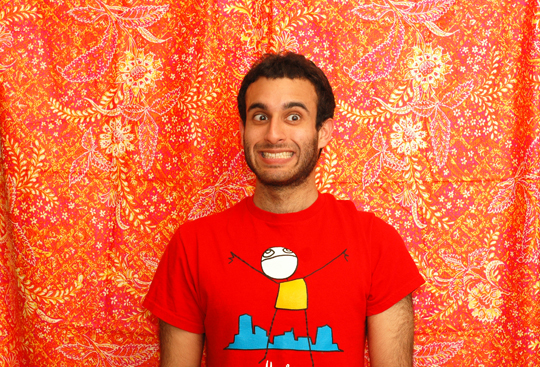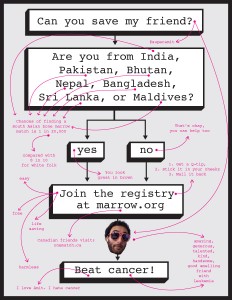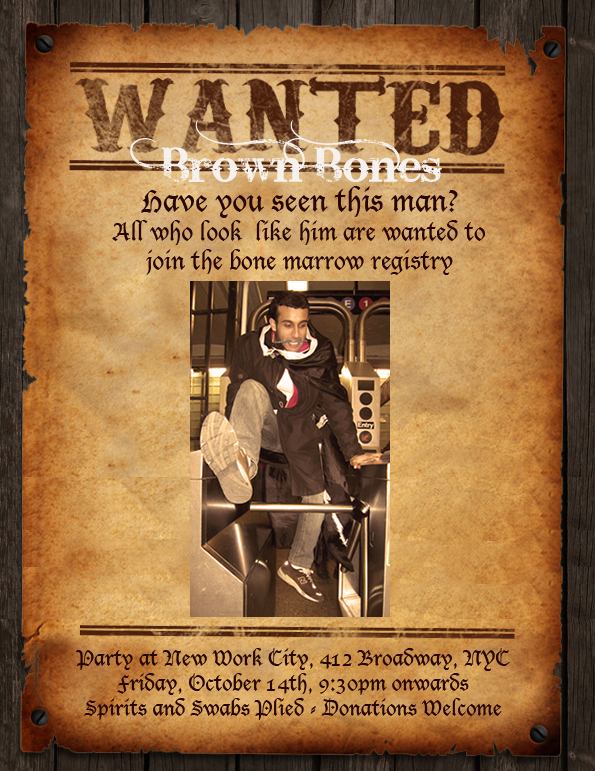Remember Amit Gupta? He was diagnosed with Leukimia in September 2011 and thus began the largest social media driven internet friendly bone marrow donor recruitment campaign we’ve seen to date. He has something to share today.
… After over 100 drives organized by friends, family, and strangers, celebrity call-outs, a bazillion reblogs (7000+!), tweets, and Facebook posts, press, fundraising and international drives organized by tireless friends, and a couple painful false starts, I’ve got a 10/10 matched donor! You all literally helped save my life. (And the lives of many others.) [amitgupta]
I am stunned by this good news! As we’ve blogged before, South Asians have a 1 in 20,000 chance of finding a donor match and to find a perfect match is even more of a slim chance. This is one of those circumstances that highlights how social media campaigns can turn into real life successes! Of course, Amit still has a battle ahead of him.
Tomorrow, I’ll be admitted to Dana Farber in Boston for 4-5 weeks.
First I’ll get a second Hickman line to allow direct access to my heart (for meds and for nutrients if I’m not able to eat). Over the next week, the docs blast my body with a stiff chemo cocktail to try and eradicate all traces of cancer cells. In the process, the immune system I was born with, and my body’s ability to make blood, are destroyed.






 While visiting Boston on business, I learned some shocking news this past weekend. My good friend Sonia was diagnosed with Acute Myelogenous Leukemia (AML) about 10 days ago. She is currently undergoing chemotherapy. She is 24 and in urgent need of a bone marrow transplant. I am still in shock and having a hard time absorbing this. Since I have known her, I cannot imagine her as being anything other than the cheerful, always smiling, bollywood-movie-loving, happy and positive person that I have known her to be. She is an active member of the South Asian community and many may recognized her contributions as a board member of NetSAP Boston. I pray she finds a donor soon.
While visiting Boston on business, I learned some shocking news this past weekend. My good friend Sonia was diagnosed with Acute Myelogenous Leukemia (AML) about 10 days ago. She is currently undergoing chemotherapy. She is 24 and in urgent need of a bone marrow transplant. I am still in shock and having a hard time absorbing this. Since I have known her, I cannot imagine her as being anything other than the cheerful, always smiling, bollywood-movie-loving, happy and positive person that I have known her to be. She is an active member of the South Asian community and many may recognized her contributions as a board member of NetSAP Boston. I pray she finds a donor soon.